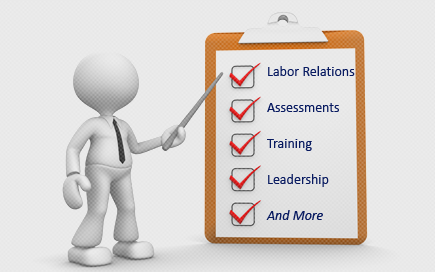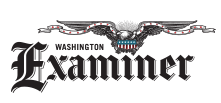Today’s Labor Updates:
NLRB will limit ability of unionized business to relocate
The decline of the labor union
NLRB will limit ability of unionized business to relocate
Roetzel & Andress Matthew D. Austin USA
April 23 2014
Richard Griffin, the new general counsel of the National Labor Relations Board, wants to give unions veto power over a company’s decision to relocate. Griffin recently ordered NLRB Regional Directors to seek guidance from his office before acting on relocation cases.
Currently, unionized employers may relocate some or all of their facilities and eliminate bargaining unit work if the moves is motivated by economic gain and the employer determines that bargaining would be futile, i.e. that the union could not offer labor cost savings that could change its decision. Unions can contest the employer’s decision, but they have no right to participate in it or otherwise delay it absent a court order enjoining it.
Griffin intends to change this law by making bargaining mandatory. Requiring bargaining with the union over a work relocation decision that will eliminate the union, in my opinion, invites delay and conflict. I believe unions may be tempted to abuse the bargaining process with endless requests for information and may even create workplace discord to convince the employer to remain in place or pay large sums of money to move.
The decline of the labor union
By Sean Higgins | APRIL 28, 2014 AT 5:27 AM
Part of the Washington Examiner‘s weeklong commentary series on labor unions. To see the entire series, click here.
A massive snowstorm hit Chattanooga, Tenn., on Feb. 13, forcing the Volkswagen plant to close in the middle of an historic election to decide whether its workers would join the United Auto Workers union. It was the UAW’s latest lucky break. The union had gotten most of its supporters to vote on the first day and the election would be decided by a majority of votes cast. So if only 100 of the 1,550 eligible workers ultimately cast ballots and 51 were for UAW, it would still win. Even before the snow fell, VW officials had pushed the UAW’s organizing effort. Under pressure from its German workers union, IG Metall, VW even held mandatory meetings where workers were forced to hear UAW organizers. No opposition voices were allowed to speak. But when the votes were counted, the UAW lost, with the final tally showing VW workers voted 712-626 against unionizing.
Big Labor blamed Republicans for the loss, but University of Maryland economist Peter Morici said the problem was the union’s poor reputation. “The UAW really does have a national black eye, and it’s symbolic of what the labor movement is,” Morici said. The union was once a dominant player in U.S. auto manufacturing, representing an estimated 1.5 million workers in the 1960s and ’70s. Today, it represents 382,000.
Its fortunes have reflected those of Big Labor as a whole. At its height in the mid-1950s, the American labor movement represented about one out of every three American workers. It has been a long, steady decline ever since. Out of a workforce of 129 million, there are just 14.5 million people in a union today, or about 11.2 percent. Only 6.7 percent of the private sector is now unionized, compared with 35.3 percent of the public sector. Big Labor has lost 3 million members since 1983. As recently as 1980, the movement had 20 million members.
There are multiple explanations for the decline, including international economic competition, technological advances that eliminated some jobs, increased immigration that provides cheaper labor, and complacency among union leaders. But another reason needs to be considered: Maybe people just don’t want to join unions anymore. Maybe people are deciding that being a member holds little advantage. Unions enjoyed a 75 percent approval rating with the general public in 1956, according to the Gallup Poll. By 2013, approval had sunk to 54 percent and had been even lower, reaching 48 percent in 2009 following the government bailouts of General Motors and Chrysler. But “approval” isn’t the same as support. The 2013 Gallup Poll found only 33 percent of respondents want labor unions to have more influence, while 38 percent wanted unions to have less. Big Labor’s agenda has little appeal for working people outside of the movement. Its current top issue is raising the minimum wage, which affects only 4.7 percent of Americans, according to government data.
Besides the minimum wage, the AFL-CIO, the largest labor federation, has recently backed government-funded green jobs, comprehensive immigration reform and promoting Obamacare, none of which is likely to boost union membership. Nor are Big Labor’s more recent successes much of an enticement. The 2009 auto industry bailouts cost more than $10 billion in taxpayer dollars. Public opposition to the bailouts remains strong. Big Labor simply hasn’t adapted to the digital workplace where which millions work at a job for only a few years before moving on. Having a union card means being tied down. Fields that emphasize entrepreneurialism and individual initiative, especially those in Silicon Valley, have little use for one-size-fits-all union rules.
The labor movement also has tilted sharply leftward on economic and social issues in the past decade. That greatly disturbs the estimated 40 percent of union members who are more conservative. “The union has a position on everything, and once you join a union, you have to be a good Democrat. Well, that just isn’t going to work with some people,” Morici said. The rise of public sector unionism — that is, government workers — stabilized the movement for a while by boosting its numbers.
Today, about half of union members are public employees. Thus, a movement that began as a way to raise the standard of living for blue-collar workers now depends on employees paid with tax dollars. Public-sector unionism corrupts the political process, too, since members are both employees and a special interest group with votes. That gives public employee unions immense leverage to extract more concessions. Corrupt officials like former Illinois Gov. Rod Blagojevich have often been too happy to oblige.
But the Great Recession of 2009 forced state and local officials to confront unaffordable public employee pension and health benefits. That means union leaders are busy fighting for old benefits instead of thinking up new services to offer members. The Detroit bankruptcy resulted in the city being given permission by a federal court to trim public employee pension obligations. That could be a turning point, because federal bankruptcy law trumps state and local law, thus giving elected officials a powerful tool to gain new concessions from government employees. Public employee unions now face a situation similar to the one private sector unions were in three decades ago: complacent and unprepared for the changing workplace environment and new economic realities.
If past is prologue, today’s public employee-dominated unions will decline like the old blue-collar trade unions. Will they also block reforms sought by workers who left them behind?



